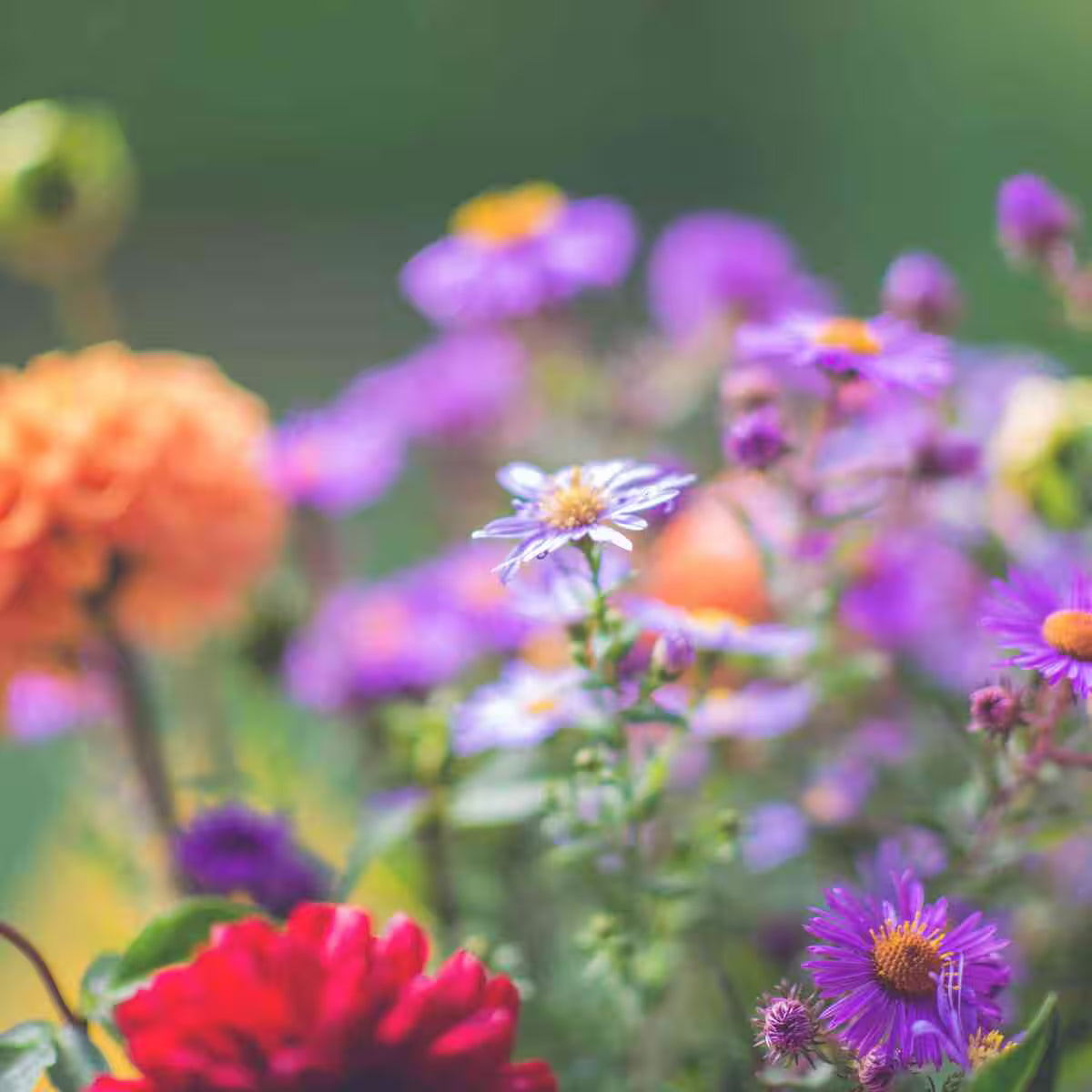
Cut Flowers & Pest Control
Cut flower fields present unique pest management challenges due to their exposure to environmental conditions and the high cosmetic standards required for marketable blooms. Insects such as aphids, thrips, caterpillars, and leafminers can quickly reduce flower quality, making chemical-free pest control essential for preserving visual appeal and extending vase life. Biological control offers an ideal solution, using beneficial insects like lacewings, nematodes, and parasitic wasps to target specific pests without harming the flowers or leaving behind residues. Because cut flowers are often harvested shortly after pest issues arise, biocontrol provides fast-acting, residue-free protection that supports both sustainability and market readiness. This approach allows growers to maintain healthy crops while meeting consumer and retailer demand for environmentally responsible production.
Monitoring & Mass Trapping
Weekly monitoring is the most important component of any outdoor pest management program, especially in cut flower fields where early detection is key to effective biocontrol. While Horiver sticky cards and roller tape are useful for monitoring pest presence, they are not suited for mass trapping outdoors due to the chance of them capturing natural insects. Instead, growers should rely on pest-specific tools such as pheromone traps and lure-based delta or bucket traps, which are designed for targeted mass trapping of species like moths, weevils, or flies. These traps use species-specific attractants to draw in large numbers of pests, helping to reduce population pressure while providing accurate data on pest trends. Regular weekly scouting combined with the strategic use of specialized traps allows for timely intervention and ensures biocontrol programs stay aligned with actual pest activity in the field.
Incorporating flowering plants into and around cut flower fields is a powerful way to attract and support natural insect allies. Nectar- and pollen-rich species such as alyssum, dill, yarrow, and buckwheat provide essential food sources for beneficial insects like hoverflies, parasitic wasps, and lacewings—many of which are important natural enemies of aphids, thrips, and caterpillars. These supportive plantings help build local populations of beneficials and increase their activity and effectiveness within the crop. By creating a more biodiverse environment, growers can enhance natural pest suppression and improve the overall resilience of their integrated pest management (IPM) program. Choosing flower species that bloom throughout the season ensures a steady supply of resources for beneficial insects, encouraging them to stay and reproduce near the crop where their impact is needed most.
Jump-to:
Thrips Control Products
Thripex-V
-
Preventative:
- 300 predatory mites per square meter
-
Elimination:
- 500 predatory mites per square meter with blue Horiver Wetstick cards
-
Repeat Applications:
- Bi-weekly or as needed
-
Notes:
- Feeds on 1st instar thrips larvae. This should be started as soon as the plants are removed from the propagation area. Apply weekly until plants are sold or the first frost has hit the flowers in the field. Best applied using the Mini Air Bug applicator.
Chrysopa
-
Preventative:
- N/A
-
Elimination:
- 50 insects per square meter
-
Repeat Applications:
- Weekly or bi-weekly as needed
-
Notes:
- Aphids are extremely difficult to eradicate using biologicals only.
Entonem
-
Preventative:
- N/A
-
Elimination:
- 500,000 per meter square
-
Repeat Applications:
- Bi-weekly or as needed
-
Notes:
- For fast results, use in conjunction with Entomite. Works thrips pupae. Apply once the plants are planted out in the field..
Entomite
-
Preventative:
- 300 mites per square meter
-
Elimination:
- 400 mites per square meter
-
Repeat Applications:
- Once per crop cycle
-
Notes:
- Feeds on thrips pupae. Apply after plants have been planted in the field.
Whitefly Control Products
Swirski
-
Preventative:
- N/A
-
Elimination:
- 300 predatory mites per square meter
-
Repeat Applications:
- Weekly or bi-weekly as needed
-
Notes:
- Swirski only feeds on eggs and larvae of whiteflies.
Swirski Ulti-Mite
-
Preventative:
- N/A
-
Elimination:
- 1 sachet per hanging basket
-
Repeat Applications:
- Every 4 weeks
-
Notes:
- Swirski only feeds on eggs and larvae of whiteflies.
Spider Mite Control Products
Spical
-
Preventative:
- 100 per square meter
-
Elimination:
- N/A
-
Repeat Applications:
- Bi-weekly or as needed
-
Notes:
- Feeds on all stages of spider mites, but does not do well in webbing.
Spical Ulti-Mite
-
Preventative:
- One sachet hanging basket
-
Elimination:
- N/A
-
Repeat Applications:
- Every 4 weeks
-
Notes:
- Feeds on all stages of spider mites, but does not do well in webbing.
Spidex Red
-
Preventative:
- N/A
-
Elimination:
- 100 - 150 predatory mites per square meter
-
Repeat Applications:
- Bi-weekly or as needed
-
Notes:
- Feeds on all stages of spider mites. Best used when you have hot spots with webbing.
Aphid Control Products
Caterpillar Control Products
Growth Promotion & Root Disease Products
Microflora PRO
-
Preventative:
- Start treatment with two applications 14 days apart
-
Elimination:
- Apply every 14 days during periods of unfavourable conditions
-
Repeat Applications:
- Every 14-28 days, depending on crop conditions
-
Notes:
- Microflora PRO enhances plant growth by improving the availability of plant nutrients through the root system.
Trianum-P
-
Preventative:
-
Elimination:
-
Repeat Applications:
-
Notes:
- Trianum-P competes for space and nutrients on roots, reducing pathogen establishment. Must have a pesticide license to purchase.
Cut Flowers Solutions by Pest:






